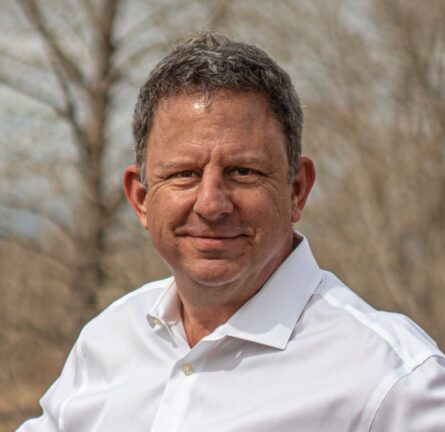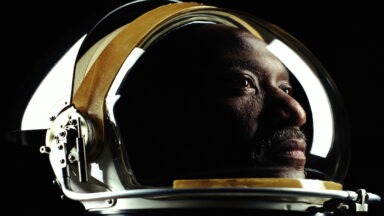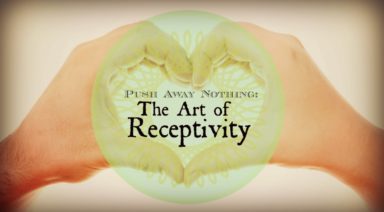The Electromagnetic Nature Of Emotions

When we allow ourselves to feel our emotions, it’s as though hidden forces, even tidal waves, move within us. As we process them, vast amounts of space within our minds and hearts emerge. We feel lighter and more resolved. Our emotions help us evolve and teach us how to expand, yet our understanding of them is limited.
Electromagnetism is the study of electromagnetic force, which is born from interactions that occur between electrically charged particles. Particles attract, matter is formed, and energy is emitted.
Electromagnetic fields transport these forces, giving birth to electromagnetic radiation, such as light. As atoms attract via electromagnetism, they create our physical realities. We cannot exist without electromagnetism.
Lightning is the result of electrostatic discharge. Emotions are similar. When we have experiences, we immediately absorb them, and then our personalities form responses. Meanwhile, without any apparent effort, our minds and hearts funnel our experiences through our unique webs of perceptions and beliefs. At the end of this speed tunnel, and without much effort, our emotions are born.
As ideas and imagery move through our minds and bodies, they bounce around like pinballs, creating, and provoking emotional responses. It’s in this way that emotions appear to be ultra-compact, contained hurricanes of raw energy. Since they can be stored and extracted, it means that emotions most likely have mass.
Emotions Are Somewhat Infectious
You’ve been in movie theaters and experienced waves of emotions. During specific scenes, you can almost feel the weight in the room. It’s quite possible that when we express emotions through laughter, yelps, and gasps, we release chemicals and electromagnetic discharges born from emotions. This is why being in a funeral home might feel different than being in your living room.
When religions tell you to ignore your emotions, they’re telling you to deny your impulses and refute your ability to expand. Since your expansion can produce your divinity, you’re a threat to every religion.
The more conscious religions or spiritual traditions will encourage you to honor your emotions, and expand your understanding of self. While it might be challenging to become self- and God-realized, we should encourage these pursuits. What can be more critical than your expanded consciousness? Maybe nothing.
If emotions weren’t the byproduct of interactions, we’d have a better chance at controlling them.
Emotions are tiny, energy-Beings that are created and fueled by our thoughts. When we have a charged thought, whether positive or negative, we will undoubtedly experience emotions. Because we often assign meaning to our thoughts, they tend to have a flavor of angry, sad, delight, fury, excitement, and more.
While it’s difficult to control how we express our emotions during traumatic and profoundly beautiful events, it’s possible.
Emotions like love, joy, comfort, relaxation, peace, and positive passion can improve our attitudes, relationships, and immune systems.

Meanwhile, emotions like fear, hate, anxiety, shame, blame, and despair tend to deplete our energy levels and health and even kills cells. Regardless of this distinction, dormant emotions, harmful or not, must be encouraged to move.
Here’s how you might awaken or move your emotions and the related electromagnetic discharges toward your favor:
- When having an emotion, allow it to breathe. Don’t judge it. Try to love it.
- As it moves within you, note how much energy it requires to sustain.
- If an emotion commandeers your passion or clarity, note its value: positive or negative.
- If it’s negative, permit yourself to express it safely. Letting out a little steam will reduce its internal effect on you. If the feelings of negativity remain dominant, choose a modality to help you express it. You might consider crying, exercising, writing in your journal, pounding the earth, or doing a healing ritual to help you expand beyond your temporary self-identity.
- If your feelings are positive, let them fill you up, then share them with abandon.
- In every situation, you can choose a higher-level perspective. In doing so, your emotions will follow suit. While honoring your emotions is essential, it’s best not to fuel negative emotions. Give them their say, even a vote, but don’t give them a seat at the table or cement them into your reality.
Can We Replace Emotional and Mental Mechanisms to Make Life Easier?
Human beings do not react similarly to the same conditions, largely because our perceptions and beliefs are not uniform. Each of us is a unique being, with indeterminable mental pathways, emotional mirrors, and projection systems. Given the complexities of each person’s life, it would be quite challenging to successfully swap one person’s wirings and inner workings for another’s.
Current technological advances seem to allude to the possibility of replacing aspects of ourselves with prosthetic emotional and mental constructs. While this is compelling, it would most likely require brain transplants, and thorough expunges of our neural networks. In cases like these, individuals would no longer be themselves. In fact, they might be considered adult new-borns.
Where Can Our Emotions Lead Us?
Just like a compass needle, our emotions seem to point us in specific directions. Anger tends to lead to destruction, although rage can protect us in certain situations, and noble “fights” can produce miraculous outcomes. Joy and love tends to point to positivity, although it can also result in permeable boundaries and unwanted pregnancies. It’s all a matter of perspective, and it’s situation-specific. If we’re careful with our emotions, we can construct formidable personalities, through which, we can create empowered lives.
What’s The Takeaway Here?
Your emotions comprise one, massive, collective organ. Each emotion is akin to a mini hurricane, which can save, protect, or heal you. Emotions either fuel your reality or feed its deconstruction. Every emotion you have is a piece of you. It lives within your body and emits electromagnetic discharges. Your emotions have a substantial influence on your overall vibration.
Treat this vital, collective organ with respect. Seek modalities and rituals that ground and nurture you, and use your words and tears to express your position. Remember that you can often choose your emotions, or at the very least, choose to improve upon them.
Finally, in all things:
- Accept what is happening in the present moment.
- Release your resistance to the flow.
- Be careful when assigning meaning to circumstances, events, and relationships.
- Focus on love, joy, and health.
- When confronting hypocrisy and insanity, be fierce, firm, and swift.
- Remember, the past is a canceled check.
- Choose positive responses whenever possible.
- Set clear boundaries so you can protect your beautiful garden.
What Are The 8 Real-World Types Of Love?

We can explore the fantasy definitions of love, including Eros, Storge, Philia, Ludus, Pragma, Philautia, and Agape. We can enjoy Robert Sternberg’s 3-component theories of love. Or we get into the down-n-dirty reality of love — the stink of it all. Yeah, let’s do that.
Real-world love is complicated, messy, and it doesn’t often come with instructions. While love can be delicious, nurturing, and near-perfect, it tends to be mysterious and elusive. Love is a tough concept to grasp and even more challenging to attract.
While there have been many brilliant people who have outlined profound concepts on love and relating, here’s my take on The eight Real-World Types of Love:
- Ego Love
Ego Love relationships are born from what other people provide and represent. It’s a self-centered style of love that is most often based on need-fulfillment. When Ego Lovers appear to be full of light and goodness, it’s often because their life requirements are being simultaneously met. If the slightest thing goes wrong or if an ego is pinched, the relationship can collapse in a heartbeat.
When two people are relating from this position, it’s all based on expectations. This is not necessarily bad, but it can be wrought with issues.





































